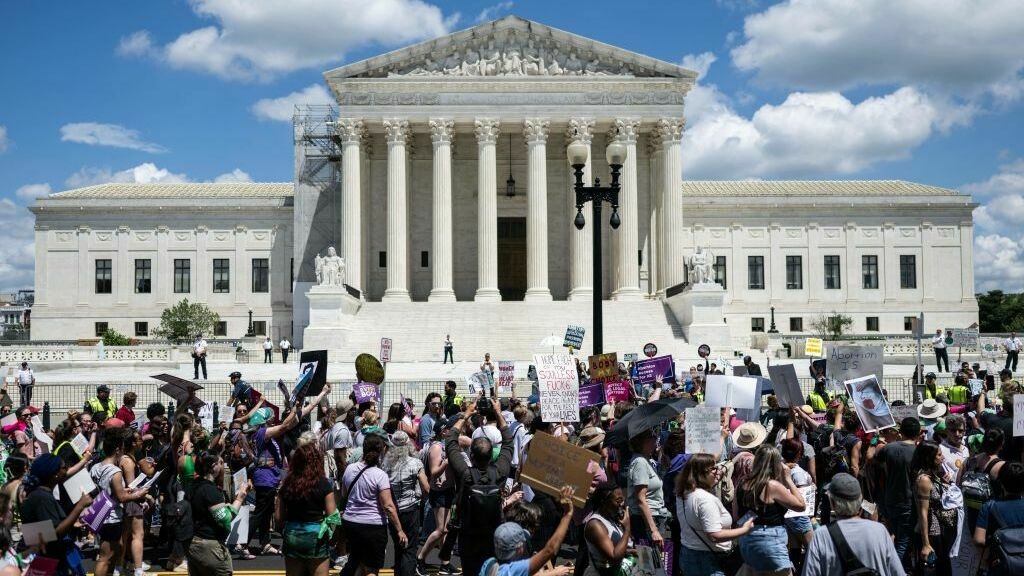
Demonstrators rally to mark the first anniversary of the US Supreme Court ruling in the Dobbs v Women’s Health Organization case in Washington, DC on June 24, 2023.
ANDREW CABALLERO-REYNOLDS/AFP via Getty Images
From the moment the Supreme Court decision overturning the right to an abortion was leaked last spring, researchers and pundits began to predict the consequences.
A year later, data is beginning to bring the real-life effects into focus. Over a dozen states have near total abortion bans, with several more state bans in the works. At least 26 clinics have closed. In Texas, nearly 10,000 more babies were born in the state since its 2021 “heartbeat bill” took effect.
The number of abortions that happened nationally declined, though not as much as many anticipated. Health care workers provided 25,000 fewer abortions through March 2023. For context, there were around 930,000 abortions in 2020 according to the Guttmacher Institute.
As the U.S. enters its second year without the abortion access provided by Roe v. Wade, NPR asked abortion researchers and clinicians what they expect will change in the year to come.

1. The entire Southeast could become an abortion desert
A growing number of states are taking steps to ban or severely restrict abortion. Researchers think as many as 25 states could ultimately do so.
“There are several states in the Southeast that are really essential to abortion access – Florida, North Carolina, Virginia, South Carolina as well,” says Ushma Upadhyay, a professor and public health scientist at University of California San Francisco. She analyzed abortion data from providers for #WeCount, a project of…
Read the full article here

Leave a Reply